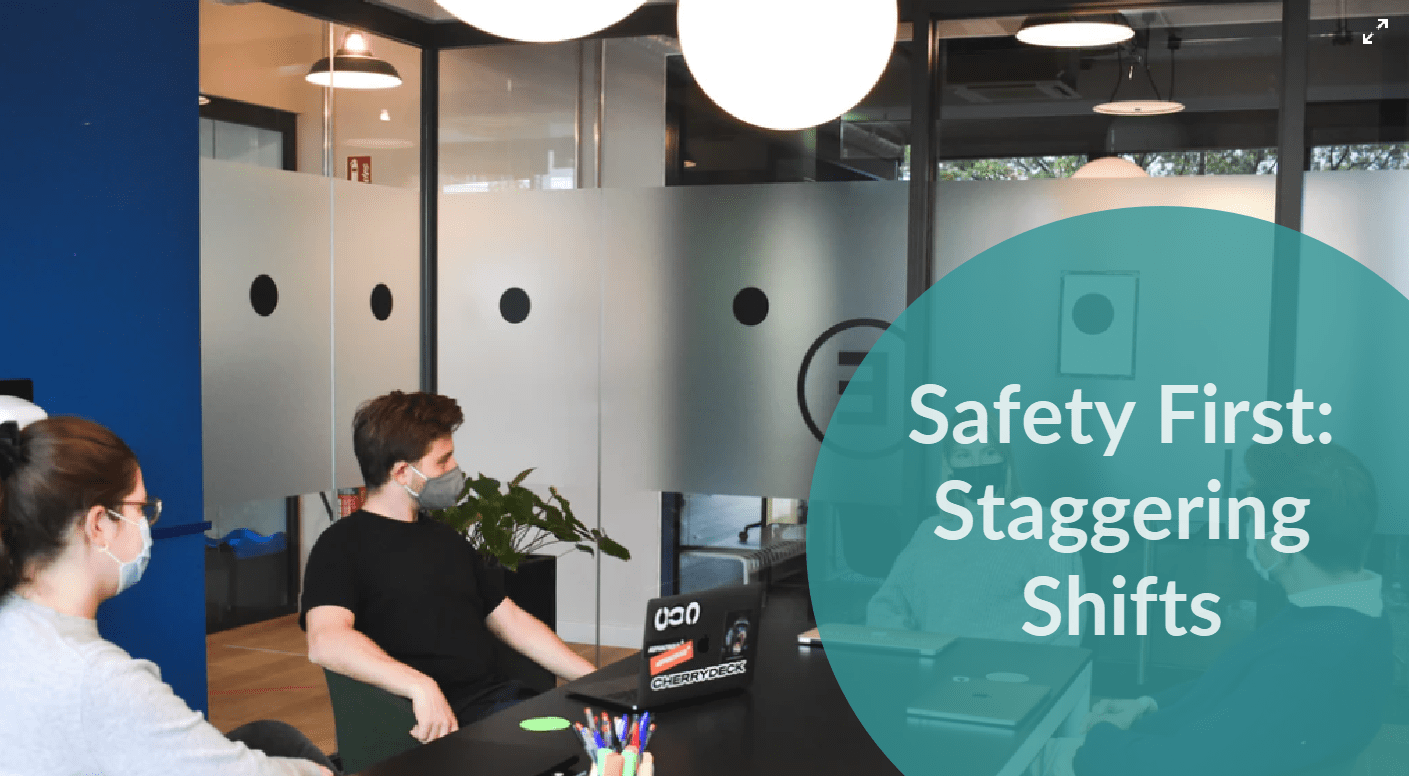Safety First: How to Stagger Shifts to Ensure Employee Health
Now 2020 is over and done with, we can acknowledge that the past year was particularly challenging for most companies. The COVID-19 pandemic presented business owners and workforce members with a series of unprecedented problems regarding health and safety.
During the health crisis caused by the pandemic, lockdowns and social distancing measures forced many businesses to shift toward a remote working approach. However, with things slowly going back to normal, many companies are starting to reopen, bringing their workforce back into the office space.
If you’ve found yourself in this position and are wondering what the best approach is to keep your workers safe and maintain a relative sense of normalcy while doing so, then we have a great strategy for you: staggering shifts.
This approach to scheduling your staff members’ shifts will allow you to carry on working while making sure you’re following the necessary safety protocols to keep everybody safe. Here’s how to do it.

Image source
1. Organization is key
Having good organizational skills is always useful when scheduling your workers’ shifts; when it comes to staggering them, it’s essential. If you want to ensure everything is clear to your workers, you can create a chart to better organize shifts.
Charts are an excellent tool if you want to represent statistics, but there’s much more they can do too. Not every chart you create is going to be a numerical chart; they can also be excellent visual representations of complex systems with many moving parts, like your staggering shifts strategy.
You can use an organizational chart with easy-to-follow visual cues to highlight changes in shifts and keep an organized schedule. This shared chart will allow employees to schedule their shifts collaboratively to avoid any potential issues.
If you’re not keen on creating a chart from scratch, don’t despair – you can always leverage the power of digital asset management solutions to keep a record of your workers’ schedules and shifts.
These types of software programs can be used to manage customer data or for internal use, since they enable companies to keep an organized record of their employees’ profiles. They can also be used to organize timetables, calendars, and shifts.
Visual cues are an excellent tool to keep people safe too. It won’t hurt to put some eye-catching banners around the office space, for example, to illustrate the COVID-19 safety measures you are taking, or to print out your weekly shift schedule.
These simple and friendly-looking posters could include simple reminders like using masks when needed, utilizing hand sanitizer, and keeping a social distance when in communal areas, as well as not interacting during shift changeovers.
As businesses and cities are slowly returning to normal, these eye-grabbing banners have taken over, ensuring safety protocol compliance to help us all adapt to our new reality.

Image source
2. Balance your schedules and workloads
Staggering shifts is vital to avoid overcrowding in the office. However, making changes to shifts and working schedules has a direct effect on how you should balance your employee workloads. It’s important to adapt to this new reality and react accordingly, and to maintain balance, you’ll need to create an efficient working schedule.
An efficient working schedule will allow your workers to get things done, addressing tasks efficiently, meeting deadlines, and boosting productivity. As we previously mentioned, a well-crafted schedule has to be balanced. You cannot have an efficient working schedule with too few employees.
On the other hand, having too many workers on a single shift is a risky move during the current pandemic that could damage your workers’ health and lead to loss of money and reputation. In essence, you need to have just enough employees to handle the job.
If you have too many people during a single shift, you’re wasting time, money, and talent. However, it’s vital to have enough people working on a project. An unbalanced workload or poorly scheduled shift is one of the most common scheduling errors.
If you want to make sure you have stability across all shifts, consider mixing experienced employees with newer ones. The same concept applies to remote workers and in-office staff members. By creating your schedule around employees’ abilities and availability, you ensure you have someone others can rely on present at all times.

Image source
3. Keep your workforce connected
Staggering shifts and rearranging schedules can cause chaos at first, so it’s essential to keep everybody connected and informed at all times. Making your staff split their working hours between remote and in-office working is difficult but not impossible.
Yes, this challenging new scenario can slow down projects and affect your workforce’s ability to perform tasks, but if your remote and in-office workers manage to communicate properly, everything should run smoothly.
The first step is implementing video conferencing and voice-based technologies to keep employees connected. Once that’s done, your teams must work on long-distance communication to develop a truly collaborative remote working environment.
This hybrid approach is not bulletproof and sometimes unexpected issues can cause miscommunication problems. Luckily, you can fight back against poor internet connection or low-quality audio using hacks like the UK phonetic alphabet.
Also known as the NATO alphabet, this communication system is designed to fight language barriers and improve the accuracy of voice messages. If your workforce has issues learning how to use it, don’t worry: you can always give them a cheat sheet. You could include this in a guide or manual, which you could create using an online employee handbook maker.
Additionally, investing in VoIP phones and video chat apps will give your workers the ability to connect between departments. These devices and software solutions tend to include essential features such as multiline calling and call forwarding.
Being able to share a phone line between more than two people or having the possibility to forward phone calls are simple and effective ways to improve communication between different teams and departments.

Image source
4. Shift between remote and in-office working
As we previously mentioned, during the first stages of the COVID-19 pandemic, many digital companies asked their employees to stay home. Although businesses are starting to reopen now, staff members across various industries have decided to make a definitive shift toward remote working and telecommuting.
According to sources like Statista, at least 44% of digital workers in the United States will stick to remote working five days a week after the coronavirus pandemic. On the contrary, only 17% of workers were willing to stay working at home before the pandemic hit.
Based on this data, it’s clear that COVID-19 has completely reshaped our preferences regarding remote working. Additionally, the digital era has brought a series of technological advances that have not only made telecommuting possible but more efficient.
Thanks to the rise in digital tools, remote working is easier than ever. Your teams and departments can stay connected and work collaboratively from the comfort and safety of their homes using software solutions like video conferencing, emails, and fax machines, and this is something you should take advantage of. Use these tools to alternate between remote working and in-office work as it suits. This way you can easily avoid overcrowding in the workplace.
Image source
5. Adapt to your employees’ needs
Although it’s clear that telecommuting is very popular in the digital industry, many workers prefer separating their personal life from their careers. Additionally, many workers are new to telecommuting.
If any members of your workforce do not have previous experience of remote working, it’s important to onboard new remote employees. Giving your staff members the chance to be self-sufficient will not only make them more effective but will also enable them to work on their terms.
On the other hand, there is a chance your workers prefer to stay home. During the past year, for example, many cities were forced to instigate lockdown measures during the COVID-19 crisis. As a result, schools were closed, and many single parents needed to stay home.
Allowing those staff members the chance to work from home is an excellent way of giving your employee satisfaction surveys a boost. Remember, a happy worker is an efficient and productive worker.
The point here is that you should always stagger shifts in a way that helps your workforce to do their best while keeping a sense of normalcy in their daily lives.
Staggering shifts and alternating between remote and in-office working should not be a chaotic or stressful situation. Not only businesses but employees can benefit from flexible working.












